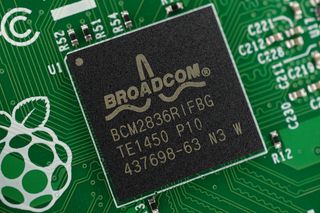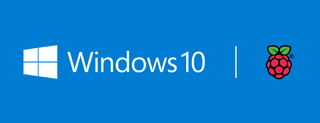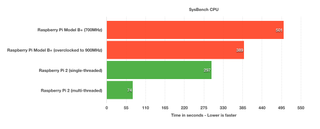IT Pro Verdict
The Pi gets beefed up hardware and the promise of a Windows 10 release later this year opens up a new world of possibilities for developers.
Pros
- +
Compatibility with existing software; Windows 10 support coming; Significantly improved performance
Cons
- -
Higher power draw than its predecessor; USB ports still limited to 1.2A in total; Ethernet remains a bottleneck
UPDATE: The Raspberry Pi 2 now includes support for the OpenGL graphics rendering API, thanks to an experimental driver.
The driver, included with the latest version of the Raspbian OS, has to be enabled via the command-line raspi-config menu.
OpenGL support now means that the Raspberry Pi has much more graphical horsepower, to the point where basic 3D gaming is possible.
The Raspberry Pi is already a great tool for retro gaming, thanks to projects like RetroPi, but OpenGL support means that it can now theoretically support classic first-person shooters like Deus Ex, Unreal Tournament and Quake 3.
The main snag for those looking to run games like these is that the Raspberry Pi still runs on an ARM Linux build, an operating system that few titles were released for. In terms of hardware power, the Raspberry Pi 2 already well exceeds the recommended specs for many games at the turn of the millennium.
However, with new tools at its disposal, it won't be long before the enterprising Raspberry Pi mod community figures out a way to get games like Half-Life running on the Raspberry Pi 2.
With the launch of the 4 Raspberry Pi Zero, Eben Upton's creation has cemented its reputation as the world's most popular single-board computer. For users that want the greatest performance in the smallest package, however, the Raspberry Pi 2 still rules the roost.
The Pi 2 is indistinguishable from older versions like the Model B+ at first glance, but boasts a quad-core processor using the newer ARMv7 micro-architecture and is now coupled with 1GB of RAM. It promises up to 6x boost in compute performance, depending on the workload.
Features that made the Pi so popular for education and experimentation including its low cost, low power draw, GPIO header, camera connector and open-source software stack all remain. And there's more to like besides...
Compatibility
The Foundation faced a tricky issue when planning a successor to the Pi. The original model, and every version leading up to the new Raspberry Pi 2, used the ARMv6 micro-architecture rather than the newer and more common ARMv7 variant. As a result, some operating systems - most notably Canonical's Ubuntu Linux - simply didn't support the Pi.
The BCM2836 chip in the new Raspberry Pi 2 uses the ARMv7 micro-architecture, bringing compatibility with a range of new operating systems.

The Foundation hasn't thrown its existing users to the wolves, however: the chip is backwards-compatible with software compiled for the older BCM2835. As a result, a Linux distribution like Raspbian - the officially-recommended operating system - merely needs a new ARMv7 kernel, stored on the boot partition as 'kernel7.img,' to run on the new Pi 2. With this kernel stored alongside the older ARMv6 kernel, the same micro-SD card can be placed into a Model B+, Model A+, or Raspberry Pi 2 and run without further modification.

With ARMv7 support comes the ability to run a wider range of operating systems, with Canonical first off the mark. A variant of its embedded-centric Ubuntu Snappy Core has already been released for the Raspberry Pi 2 as a free download.
Users can also download and run operating systems such as Pidora and RISC OS on the Raspberry Pi 2 and a couple of media centre-based OSs (OpenELEC and OSMC) will also suit those users looking to build an entertainment centre as a project.
The biggest surprise comes in the form of the promise from Microsoft that Windows 10, due to launch later this year, will be available for the Raspberry Pi 2. This marks the first time a modern Windows release has been supported on the platform. Better yet, the download will be made available free of charge for makers and tinkerers as part of Microsoft's new Windows on Devices programme. However, this will be a command line interface rather than a full-blown desktop environmnt.
Windows running on ARM won't support legacy applications compiled for desktop and laptop x86 processors, but its release at all indicates the threat Microsoft perceives from the growing use of the Raspberry Pi and Linux in education.

Performance
The Raspberry Pi B+ launch in 2014 was a disappointment, offering a new design but nothing in the way of performance improvements over its predecessor. The Raspberry Pi 2 offers massive performance users have been calling for. All that's changed from a design perspective is the package-on-package (PoP) layout of the original SoC-and-RAM, which sees the new BCM2836 located on the top of the board while the 1GB RAM module is slung underneath.
Running the SysBench CPU benchmark reveals the improvements wrought by Broadcom for the new BCM2836:

Those figures suggest a performance increase of 1.3x clock-for-clock, growing to 5.25x for parallelisable workloads.
Meanwhile, the 100MB file compression test shows the Pi 2 provides a near-7x increase in speed clock-for-clock.

The improved performance comes at a cost, of course: power draw. While idle power draw for the Model B+ and Raspberry Pi 2 is similar, the additional three processing cores draw considerably more power (0.16A). The new model's ability to complete jobs faster, however, should mean a lower overall power draw unless a project keeps it permanently at full load.
Not everything has been boosted, however. The 10/100 Ethernet interface remains a bottleneck for the Raspberry Pi 2, communicating with the SoC over a single USB channel. While the more powerful CPU may mean fewer issues when using the network alongside heavy compute load, it has made no difference to the overall network performance which remains static at a best-case 89Mb/s.
Overall
It's easy to pick holes in the Raspberry Pi 2, in particular its esoteric USB-connected 10/100 Ethernet controller and lack of high-speed mass-storage support in a market where its competitors boast gigabit Ethernet and USB 3.0 or SATA connectivity. But there's no doubt it represents a massive improvement on what has come before.
The new BCM2836 processor means that the Pi 2 can offer a user experience far closer to that of a traditional PC, which is great news for educational use where kids spend time at the desktop running Scratch, Minecraft and similar applications. For embedded developers, it makes the Pi 2 competitive with the rival devices that have been vying for the Raspberry Pi's market.
The biggest plus in the Raspberry Pi 2's sell-sheet, however, is pricing: despite the faster processor and wider software compatibility, the new model has launched at the same 30 price as the Model B+.
While the Foundation has declared that it intends to continue producing the older model, for end-users who have not yet committed to a Model B+ design the Raspberry Pi 2 can be considered its replacement. For those who can get away with the older, slower version, bargains will likely crop up as resellers discount their remaining stock and end-users take to the auction sites to fund an upgrade to the new edition.
With Microsoft pledging its surprising support for the Raspberry Pi 2, it seems likely that the Foundation is going to have yet another runaway success on its hands - and its competitors are likely to find themselves priced out of the market once again, at least for projects that don't require true USB ports or high-speed networking.
Verdict
The Pi gets beefed up hardware and the promise of a Windows 10 release later this year opens up a new world of possibilities for developers.
OS: Raspbian Linux (additional operating systems available, to include Windows 10)
Processor: 900MHz Broadcom BCM2836, four ARMv7 cores
Graphics: Dual-Core VideoCore IV
Memory: 1024MB DDR2
Storage: None on-board, requires optional micro-SD card to boot
Connectivity: SMSC LAN9514 USB hub and 10/100 Ethernet controller
Ports: 1x HDMI, 4x USB 2.0 with partial compatibility, 1x DSI, 1x CSI, 1x analogue AV (stereo audio and composite video), 40x GPIO, 1x Ethernet
Power Draw: ~1.5W idle, ~3.5W under load (measured from the wall)
Size: 82.5mm x 57.5mm x 19.8mm
Weight: 41g
Adam Shepherd has been a technology journalist since 2015, covering everything from cloud storage and security, to smartphones and servers. Over the course of his career, he’s seen the spread of 5G, the growing ubiquity of wireless devices, and the start of the connected revolution. He’s also been to more trade shows and technology conferences than he cares to count.
Adam is an avid follower of the latest hardware innovations, and he is never happier than when tinkering with complex network configurations, or exploring a new Linux distro. He was also previously a co-host on the ITPro Podcast, where he was often found ranting about his love of strange gadgets, his disdain for Windows Mobile, and everything in between.
You can find Adam tweeting about enterprise technology (or more often bad jokes) @AdamShepherUK.



